PEOPLE
Donors, family members, colleagues, and associates of Francis W. Kelsey mentioned in this exhibition:
- Allmendinger, G. Frank
- Anderson, John Wendell
- Angell, James Burrill
- Askren, David L.
- Badger (Kelsey), Mary Isabelle
- Banks, Edgar J.
- Barosso, Maria
- Beatty, Chester
- Bishop, William W.
- Boyer, Joseph
- Bristol, Mark (Admiral)
- Buhl, Theodore D.
- Butler, Orma
- Couzens, James
- De Cou, Herbert
- De Criscio, Guiseppe
- Delattre, Alfred
- Dennison, Walter
- Diel, Fred C.
- Ferry, Dexter Mason
- Freer, Charles Lang
- Frieze, Henry
- Glover, Henry P.
- Gottschalk, Paul
- Gray, David
- Gray, Philip H.
- Gray, Paul R.
- Grenfell, Bernard P.
- Hartwig, Paul
- Herzfeld, Ernst
- Hill, Arthur
- Hubley, Frank J.
- Jerome, Thomas Spencer
- Kahn, Albert
- Kelsey, Easton Trowbridge
- Kelsey, Francis Willey
- Kelsey, Frederick
- Kelsey (Diel), Ruth Cornelia
- Kelsey (Hubley), Charlotte Badger
- Kelsey, William
- Longyear, John Munro
- Longyear, Mary Beecher
- Maiuri, Amedeo
- Mau, August
- McClure (Kelsey), Vida Kennedy
- Morgan, J.P.
- Murphy, William H.
- Nahman, Maurice
- Norton, Charles Eliot
- Norton, Richard
- Petrie, William Flinders
- Pendleton, Edward Waldo
- Rackham, Horace H.
- Ramsey, William
- Robinson, David
- Russel, John Ross
- Sanders, Henry
- Stanley, Albert
- Swain, George R.
- Van Deman, Esther
- Waterman, Leroy
- White, John Williams
- Yahuda, Abraham Shalom
- Yahuda, Isaac Benjamin
- Zenos, Andreas C.
Kelsey's Major Donors
-
G. Frank Allmendinger (1855–1926)
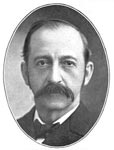
G. Frank Allmendinger earned a degree in civil engineering from the University of Michigan in 1878. He took over the Ann Arbor Central Mills with partner Gottlieb Schneider in 1884, and in 1904 became the secretary and treasurer of the Michigan Milling Company. He was a member of the board of directors for the University Musical Society and also helped his cousin, D. F. Allmendinger, organize the Allmendinger (later, Ann Arbor) Organ Company. He was invited to Kelsey's home along with two regents and ten faculty members to discuss having the School of Music taken into the University of Michigan. Pauline Boulevard in downtown Ann Arbor is named after Allmendinger's wife, Pauline Potter, whom he married in 1912.
-
James Burrill Angell (1829-1916)
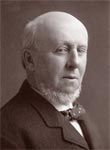
James B. Angell was a professor of law and the longest-serving president of the University of Michigan, from 1871-1909. He graduated with highest honors from Brown University in 1849, and married Sarah Swoope Caswell on November 26, 1855. In 1866 Angell served as president of the University of Vermont until his appointment as president of the University of Michigan in 1871. Angell was appointed as the United States Minister to China in 1880, he served as chairman of the United States Commission on Deep Waterways, and served as the US Minister to Turkey from 1897-8.
At the encouragement of Dr. George Bacon (of Allyn and Bacon), President Angell recommended Kelsey to the Board of Regents for his appointment as professor of Latin in 1889. Kelsey had a direct way of approaching Angell, which the president grew to appreciate. Angell assisted in a number of Kelsey's fundraising endeavors, including seeking support for students, building projects, and collections. The two shared a close relationship, and Kelsey continued to look to Angell for friendship and advice until the president's death in 1916. Angell Hall, an academic building completed in 1924 at the University of Michigan, was named in honor of the president.
-
John Wendell Anderson (1867–1946)

Educated at Cornell and Michigan (LLB 1890), Anderson practiced law in Detroit and in 1896 with Horace Rackham founded the firm of Anderson and Rackham. One of the ten earliest shareholders in the Ford Motor Company, his initial investment of $5,000, identical with Horace Rackham's, yielded $12.5 million when bought up in 1919. A reliable supporter of Kelsey's work, he contributed generously to funds for the publication of the Michigan Humanistic Series, for the acquisition of papyri, and for the second expedition.
-
Joseph Boyer (1848–1930)
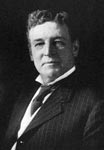
The Canadian-born Boyer was the inventor of the first effective pneumatic hammer (used for riveting steel in buildings, steamships, boilers, etc.). In partnership with William Burroughs he was also the builder of the first Burroughs Adding Machine and subsequently president of the Burroughs Adding Machine Company. Introduced to Kelsey by his son-in-law, Standish Backus (AB University of Michigan 1898), a friend of Kelsey's since his Ann Arbor days, Boyer provided $10,000 toward the costs of Kelsey's first expedition and $5,000 for research fellowships. Backus, general counsel of the General Motors Company, subsequently became president of the Burroughs Adding Machine Company himself.
-
Theodore D. Buhl (1844–1907)
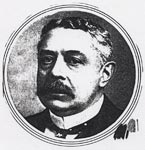
A multimillionaire manufacturer, Buhl was the son of one Detroit mayor, Christian Buhl, and nephew of another, Frederick Buhl. President of numerous companies including the Buhl Malleable Iron Works, the Buhl Stamping Company, the Buhl and Sons Hardware Stores, the Detroit National Bank and the pharmaceutical company Parke-Davis (now Pfizer) he was also a leading member of the Presbyterian church in Detroit. Buhl was an early supporter of many aspects of Kelsey's work, most notably in the provision of student fellowships, a benefaction continued for 40 years by his family after his death.
-
Dexter Mason Ferry (1833–1907)

A successful businessman in Detroit, Ferry was head of one of the largest seed companies in the United States and director of several other corporations and banks. Best known in Ann Arbor for his gift of 15 acres of land (still known as Ferry Field) in 1902 to enable the University's athletic program to expand, he also at Kelsey's request contributed substantially in 1893 to the fund to acquire for the University the organ from the Chicago World's Fair as a tribute to Henry Frieze, and to Kelsey's fund for the acquisition of antiquities. His son, Dexter M. Ferry Jr., continued his father's generosity, giving liberally to the Michigan Humanistic Series and to Kelsey's first expedition.
-
Charles Lang Freer (1856–1919)
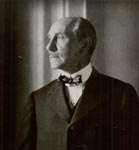
Born in modest circumstances in Kingston, New York, Freer was employed as a young man in the offices of a railroad company in Indiana. With colleague Frank Hecker he moved to Detroit in the late 1870s to found the Peninsula Car Company. After merging with the Michigan Car Company in 1892, the company became the most prosperous producer of railroad cars in the country. Retiring from business while still in his mid 40s, Freer turned his attention to collecting art, specializing in Asian art and the work of James McNeill Whistler. His remarkable collection, bequeathed to the nation, is now in the Freer Gsllery of Art in Washington, DC. Industrialist, philanthropist, and art collector, Freer was a strong supporter of Kelsey's publishing endeavors, in particular the Michigan Humanistic Series.
-
Philip H. (1865–1922), Paul R. (1867–1929), and David (1870–1928) Gray

The three sons of John S. Gray, president of the German American Bank in Detroit, one of the ten initial investors in the Ford Motor Company and the company's first president, all supported Kelsey's first expedition with donations. Paul, a graduate of U-M (AB 1890), banker, and manufacturer in Detroit and the leading figure in the management of the Gray Estate Company, also contributed repeatedly to funds for the acquisition of manuscripts and papyri. David, likewise a banker and businessman, and a director of the Ford Motor Company, similarly helped Kelsey in the acquisition of books, manuscripts, and papyri.
-
Thomas Spencer Jerome (1864–1914)

Son of David H. Jerome, governor of Michigan (1881–1883), educated at Michigan (AB 1884) and Harvard (MA 1887), Jerome practiced law in Detroit until in 1899 his interest in ancient history took him to Italy. He and Charles Freer bought a villa on Capri, where Jerome, abandoning the practice of law, spent the rest of his life working as an independent scholar. He does not seem to have contributed directly to any of Kelsey's various programs, but his enthusiasm for the classical world and his friendship with Kelsey led him to bequeath half of his working library (1,500 volumes) to the University of Michigan, together with the funds necessary to establish the now internationally famous Thomas Spencer Jerome Lectureship.
-
John Munro Longyear (1850–1922)

Longyear made an immense fortune in mining and timber enterprises in Michigan, being among the first to recognize the ore-bearing possibilities of the Upper Peninsula. He gave handsomely to support the publication of early volumes of the Michigan Humanistic Series but declined to contribute to the funding of Kelsey's first expedition in 1919. His place was, however, taken by his wife, Mary Beecher Longyear, well known for her friendship with Mary Baker Eddy and her enthusiasm for the Christian Science cause, who provided 50 percent of the budget for Kelsey's work in Asia Minor and Egypt (1919–1921).
-
William H. Murphy (1855–1929)
A member of a wealthy Detroit family that owned much of downtown Detroit, Murphy was educated at the University of Michigan, where in spite of his deafness he was an enthusiastic member of the Men's Glee Club and the orchestra. Later a lumber baron, Murphy financed the short-lived Detroit Automobile Company (whose chief engineer was Henry Ford), organized the Murphy Power and Liberty Motor companies, and helped underwrite the Detroit Institute of Arts. He contributed happily to Kelsey's publication projects, to the funding of student fellowships, and to the University Musical Society. A passionate friend of music, he covered the Detroit Symphony Orchestra's deficit every year.
-
Edward Waldo Pendleton (1848–1923)

Pendleton taught classics at Detroit High School and served as superintendent of schools in Owosso, Michigan, before being admitted to the Bar in 1876. A successful lawyer in Detroit and vice-president of Berry Brothers, manufacturers of varnishes and finishes for automobiles, he was also secretary of the U-M Memorial Hall Building Committee, a trustee of the Detroit Museum of Art, and president of the Board of Water Commissioners of Detroit. He and his wife, the wealthy Catherina Berry, contributed regularly to the publication of the Michigan Humanistic Series and student fellowships. After Edward's death, Catherina continued the fellowship support and contributed $21,500 for the establishment of the Pendleton Library (now the Pendleton Room) in the Michigan Union as a memorial to her husband.
-
Horace H. Rackham (1858–1933)

Raised in modest circumstances, Rackham began work as a cashier in a bank in Leslie, Michigan, then moved to Detroit, took odd jobs, and studied law. In 1896 he and John Anderson founded the firm of Anderson and Rackham. By chance Rackham lived next door to Henry Ford. After several false starts in automobile manufacture Ford in 1903 asked Rackham and Anderson to prepare the papers for the incorporation of the Ford Motor Company. Rackham bought 50 shares of the company for $5,000, which when bought out in 1919, realized $12.5 million. A reserved and reflective man, Rackham supported many humanistic endeavors, becoming the major contributor to Kelsey's research and publication projects, most notably the second archaeological expedition.
-
John Ross Russel (1857–1932)
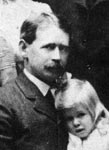
Russel joined two of his three brothers in the management of the family business, the Russel Iron Works (Russel Wheel and Foundry), where he worked as secretary-treasurer, then vice-president. He also served as president of the Great Lakes Engineering Works, makers of steel ships and engines. A Presbyterian and a Michigan alumnus (AB 1879; MD 1882), he was sympathetic to Kelsey's projects and contributed significantly to the costs of Kelsey's many publications and to the first expedition.